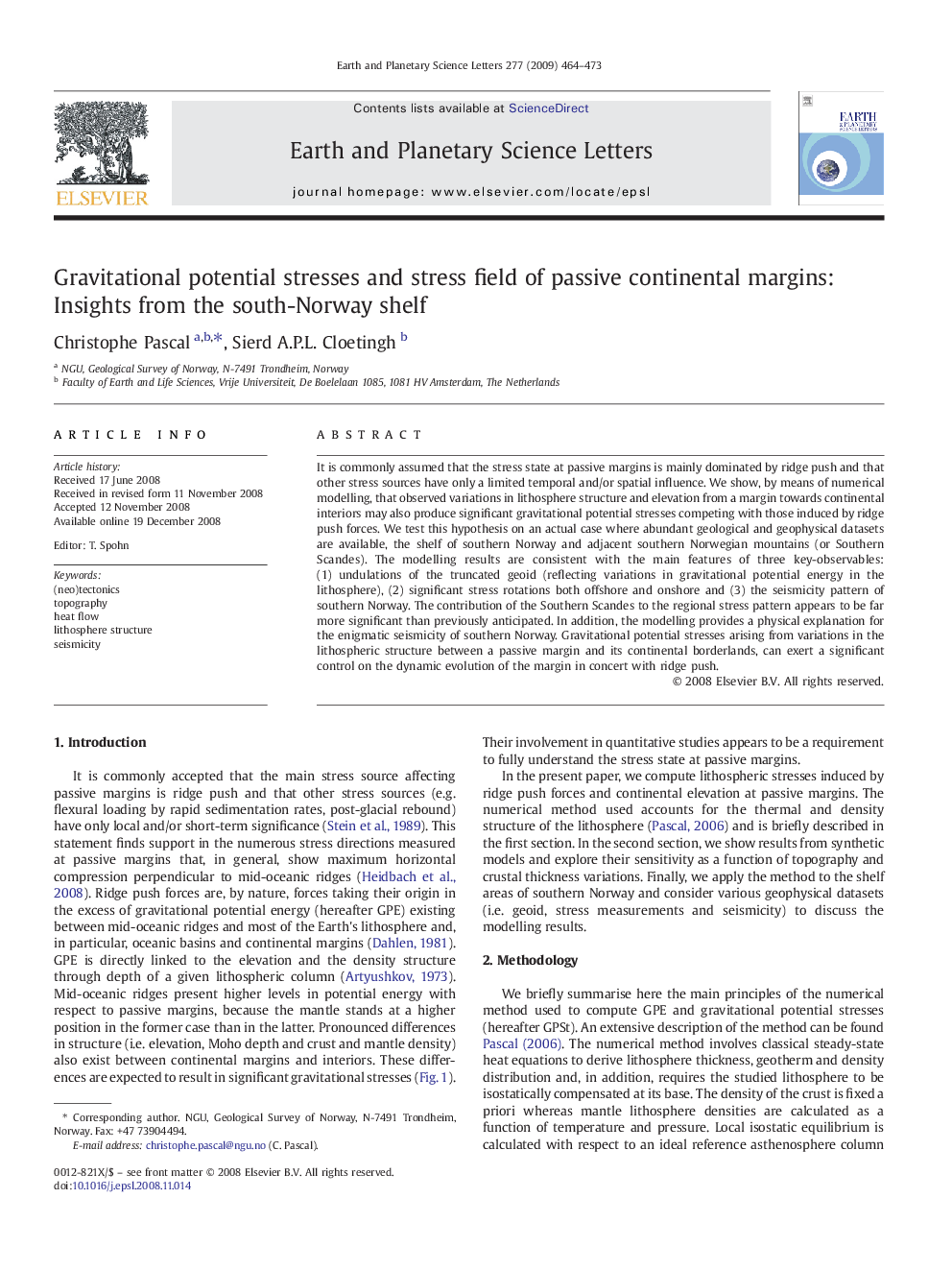| Article ID | Journal | Published Year | Pages | File Type |
|---|---|---|---|---|
| 4679426 | Earth and Planetary Science Letters | 2009 | 10 Pages |
It is commonly assumed that the stress state at passive margins is mainly dominated by ridge push and that other stress sources have only a limited temporal and/or spatial influence. We show, by means of numerical modelling, that observed variations in lithosphere structure and elevation from a margin towards continental interiors may also produce significant gravitational potential stresses competing with those induced by ridge push forces. We test this hypothesis on an actual case where abundant geological and geophysical datasets are available, the shelf of southern Norway and adjacent southern Norwegian mountains (or Southern Scandes). The modelling results are consistent with the main features of three key-observables: (1) undulations of the truncated geoid (reflecting variations in gravitational potential energy in the lithosphere), (2) significant stress rotations both offshore and onshore and (3) the seismicity pattern of southern Norway. The contribution of the Southern Scandes to the regional stress pattern appears to be far more significant than previously anticipated. In addition, the modelling provides a physical explanation for the enigmatic seismicity of southern Norway. Gravitational potential stresses arising from variations in the lithospheric structure between a passive margin and its continental borderlands, can exert a significant control on the dynamic evolution of the margin in concert with ridge push.
